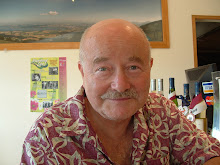This piece was derived from a requested presentation to our local chaplain’s group. The goal was to address the “Woo Woo” factor involved with labyrinths. Specifically the labyrinths at the three hospitals owned by Assante in the Rogue Valley in Southern Oregon, one of which I had installed a few years ago. Please forgive the basic approach as many of you are very tuned into labyrinths for a long time.
In the first place
Labyrinths are no more and no less than a source for meditation and/or an art
form.
They are what you make of them - they may help you (staff/patients/family) to slow down and reflect / release stress.
Every culture and most religious systems have embraced some form of solitude or meditation as a means of achieving balance. How many of you have never been told to just slow down, take a deep breath, relax. Supposedly that is the function of a vacation or a holiday but sometimes they can be more stressful than life.
The difference between a maze and a labyrinth is quite simple.
A maze has high walls, no visual of the goal, and many dead ends-
Some examples from ancient mythology would be trapping the “Minotaur” within a maze in ancient Greece; or more recently Jack Nicholson in “The Shining”

I have been involved in the art of building labyrinths in the form of a memorial, specifically to honor my deceased wife, Sherita.
One of the last chances we had to share before the end of her battle with Pancreatic cancer was at a labyrinth in Palos Verdes Estates overlooking the Pacific Ocean

Following her passing I installed the first Labyrinth at Ashland Community Hospital in winter of 2008/09
It is of a 5 circuit Neoclassical Chelsea design incorporating a water feature (symbolizing the life sustaining nature of God) and a granite bench (for reflection) in the center. The hardscape is *utilizing paver stones and several memorial plaques.

In the last few years I’ve been instrumental in the establishment of two other Labyrinths, the same style but larger (7 circuits),

and in the “Franciscan style” (blending with nature and using native materials)
One is located at Earthteach Nature Preserve accessed from the 9 mile marker up Dead Indian Memorial Rd out of Ashland. Earthteach has a labyrinth on site as well, which is actually visible from Google Earth. The one we are installing will never be seen from the sky as it follows the classical path but winds “between” the old growth timber a mile or so above the other one.

The other, my son and I just completed on the beach in Southside Kauai.
We have renamed a portion of this coastline Momilani Kai which translates to Pearl Cove. Sherita’s middle name is Pearl. Her ashes were scattered at her request near this spot, where we were married on April 28th 2004.

Constructions materials
Can be as varied as the developer desires but the most common are concrete inlay or stamped, Paver stones or bricks, rock or other boarder materials (Logs). Plants may be also used as boarders in the form of Low hedges or ground cover (Thyme or Lavender).
Labyrinth Shapes
Vary over the world and with different cultures and purposes
You may find examples in virtually every culture and era in human history and prehistory
A few examples are;
the most ancient European/ middle East “classical Greek 7 circuit”
The Mayan culture
The North American Medicine Wheel
A johnny come lately is the French 11 circuit Chartes style (has actually become one of the most popular in the West)
Other patterns from the “labyrinth company” website include quite a variety most notably a “Baltic Spiral”, which is very useful for a continual flow in and out.

And a “ceremonial style”, which is designed to allow two individuals to take separate paths into the center and then to exit a third entry together.

Thank You!
“Mahalo Nui Loa”
Bob Vlach http://praisegodviathespiritofthechrist.blogspot.com

I just have to repost these two great shots from Michael














No comments:
Post a Comment